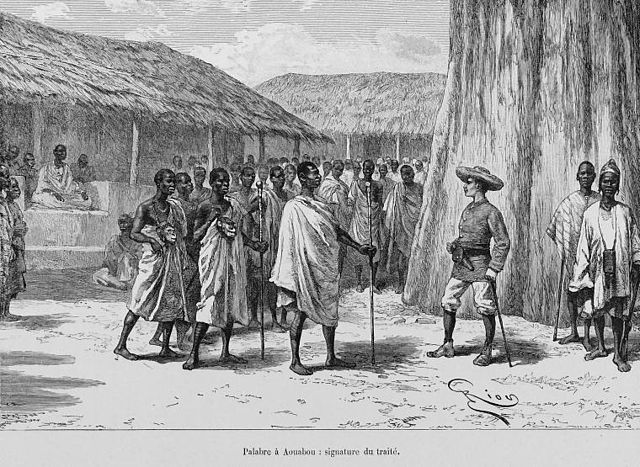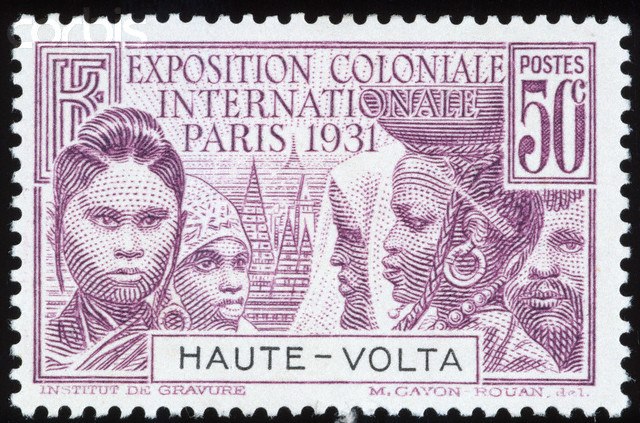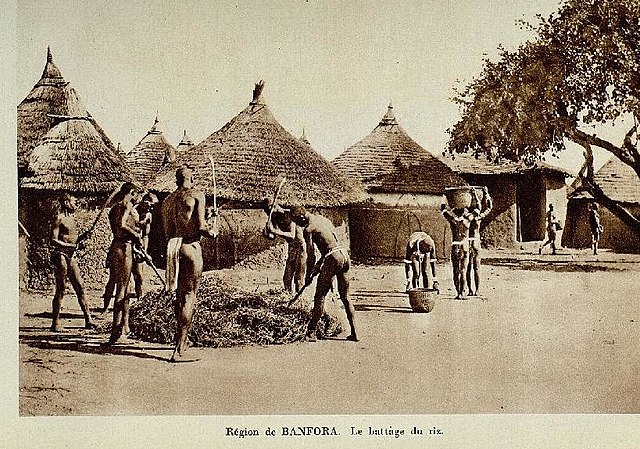Human arrival in Ivory Coast has been dated to the Upper Paleolithic period, or at the minimum, the Neolithic period based on weapon and tool fragments, specifically polished shale axes and remnants of cooking and fishing. The earliest known inhabitants of Côte d'Ivoire left traces scattered throughout the territory. Historians believe these people were all either displaced or absorbed by the ancestors of the present inhabitants. Peoples who arrived before the 16th century include the Ehotilé (Aboisso), Kotrowou (Fresco), Zéhiri, Ega, and Diès (Divo).
Commander E. Bouët-Willaumez and the chiefs of the Krou coast in trade negotiations
Louis-Gustave Binger in 1892 treaty signing with Famienkro leaders.
Louis-Gustave Binger
Samori Touré
Upper Volta was a colony of French West Africa established in 1919 in the territory occupied by present-day Burkina Faso. It was formed from territories that had been part of the colonies of Upper Senegal and Niger and the Côte d'Ivoire. The colony was dissolved on 5 September 1932, with parts being administered by the Côte d'Ivoire, French Sudan and the Colony of Niger.
Upper Volta stamp of 1931, marking the Paris Colonial Exhibition
Threshing African rice in Banfora Department, 1931
Missionary Sisters of Our Lady of Africa at a dispensary in Toma, 1920s







